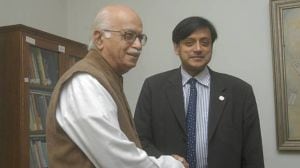ASER 2024 | Silent revolution: Drop in unschooled mothers from 47% to 29% in 8 yrs
Among the states, Kerala has not only seen the highest rise in this figure over the past eight years, but has also fared the best when it comes to schooling levels of mothers.
 Kerala was followed by Himachal Pradesh, which saw a rise of around 22 percentage points in this figure in the past eight years — 30.7% of mothers had studied beyond class 10 in 2016, and this went up to 52.4% in 2024.
Kerala was followed by Himachal Pradesh, which saw a rise of around 22 percentage points in this figure in the past eight years — 30.7% of mothers had studied beyond class 10 in 2016, and this went up to 52.4% in 2024.
A quiet revolution in education has been unfolding across rural India among mothers of school-aged children.
According to the Annual Status of Education Report (ASER) 2024, released last month, there has been a significant transformation in maternal education levels over the past eight years. The proportion of mothers (of children in the 5-16 age group) who have never attended school has dropped from 46.6% in 2016 to 29.4% in 2024 — a shift that government officials say represents the gains of Sarva Shiksha Abhiyan (now Samagra Shiksha), launched in 2001-02 to achieve universal enrolment.
This change, however, is not just about more mothers attending school; the data reveals they are also pursuing higher levels of education, with an increasing number studying beyond class 10. Only 9.2% of mothers had studied beyond class 10 in 2016. In eight years, this rose by 10 percentage points to 19.5% in 2024.
Among the states, Kerala has not only seen the highest rise in this figure over the past eight years, but has also fared the best when it comes to schooling levels of mothers. In 2016, 40% of mothers had studied beyond class 10. In 2024, this soared to 69.6% — a rise of 29 percentage points. Both in 2016 and in 2024, among the states, Kerala has seen the highest percentage of mothers with education beyond class 10.
Kerala was followed by Himachal Pradesh, which saw a rise of around 22 percentage points in this figure in the past eight years — 30.7% of mothers had studied beyond class 10 in 2016, and this went up to 52.4% in 2024.

Haryana, Andhra Pradesh, Karnataka, Maharashtra, Tamil Nadu, Telangana, Uttar Pradesh, Uttarakhand, and West Bengal have all seen a rise of more than 10 percentage points in the percentage of mothers who have studied beyond class 10.
The state that fared the worst on this front was Madhya Pradesh, where 9.7% of mothers had studied beyond class 10 in 2024, up from 3.6% in 2016.
The rise in the percentage of fathers who have studied beyond class 10 is smaller — from 17.4% in 2016 to 25% in 2024, an increase of eight percentage points.
The gap between the percentage of mothers and that of fathers who have studied beyond class 10 has reduced in the past eight years. In 2016, the percentage of fathers who studied beyond class 10 was eight percentage points more than that of mothers. This is down to around five percentage points in 2024.
ASER is a nationwide rural household survey that the NGO Pratham conducted, testing 6,49,491 children on basic reading levels and arithmetic across 605 rural districts in the country. In addition to looking at enrollment and learning levels, ASER collects information on the number of years of school of the father and mother of each child who has been surveyed.
Pratham CEO Rukmini Banerji said the increasing schooling level among mothers was in line with the increase in overall enrollment over the years.
“These are mothers of children who are in the age group of 5-16. The mothers who are more educated are likely to be mothers of the younger children… if a child is 5, and the mother is 20, the mother would have gone to school around the time that elementary education was universalised, and there were high enrollment levels,” she said.
A senior official in the Education Ministry also said that young mothers today would have gone to school around the time that enrollment and access to education was on the rise. Sarva Shiksha Abhiyan (now Samagra Shiksha) was launched in 2001-02 with the aim of universal elementary education.
“This is very significant… it is very well known from lots of research that the mother’s education has positive effects on the children,” Banerji said.
Research points to how maternal literacy has positive effects on the schooling of children and their educational outcomes.
A 2017 paper by Banerji, James Berry, and Marc Shotland — ‘The Impact of Maternal Literacy and Participation Programs: Evidence from a Randomized Evaluation in India’ — showed how interventions like language and math classes for mothers, and training for them on helping with their child’s learning at home, resulted in improvements in the child’s math learning outcomes.
In the ASER 2024 report, Madhav Chavan, president and member of the Board of Directors, Pratham Education Foundation, wrote: “It is also important to note that the proportion of schooled mothers has been growing significantly. These mothers are an important demand driver for education… The national policy and the mass scale push from civil society for stronger early years education have led to meeting the demands of the people, especially the increasingly schooled mothers.”







